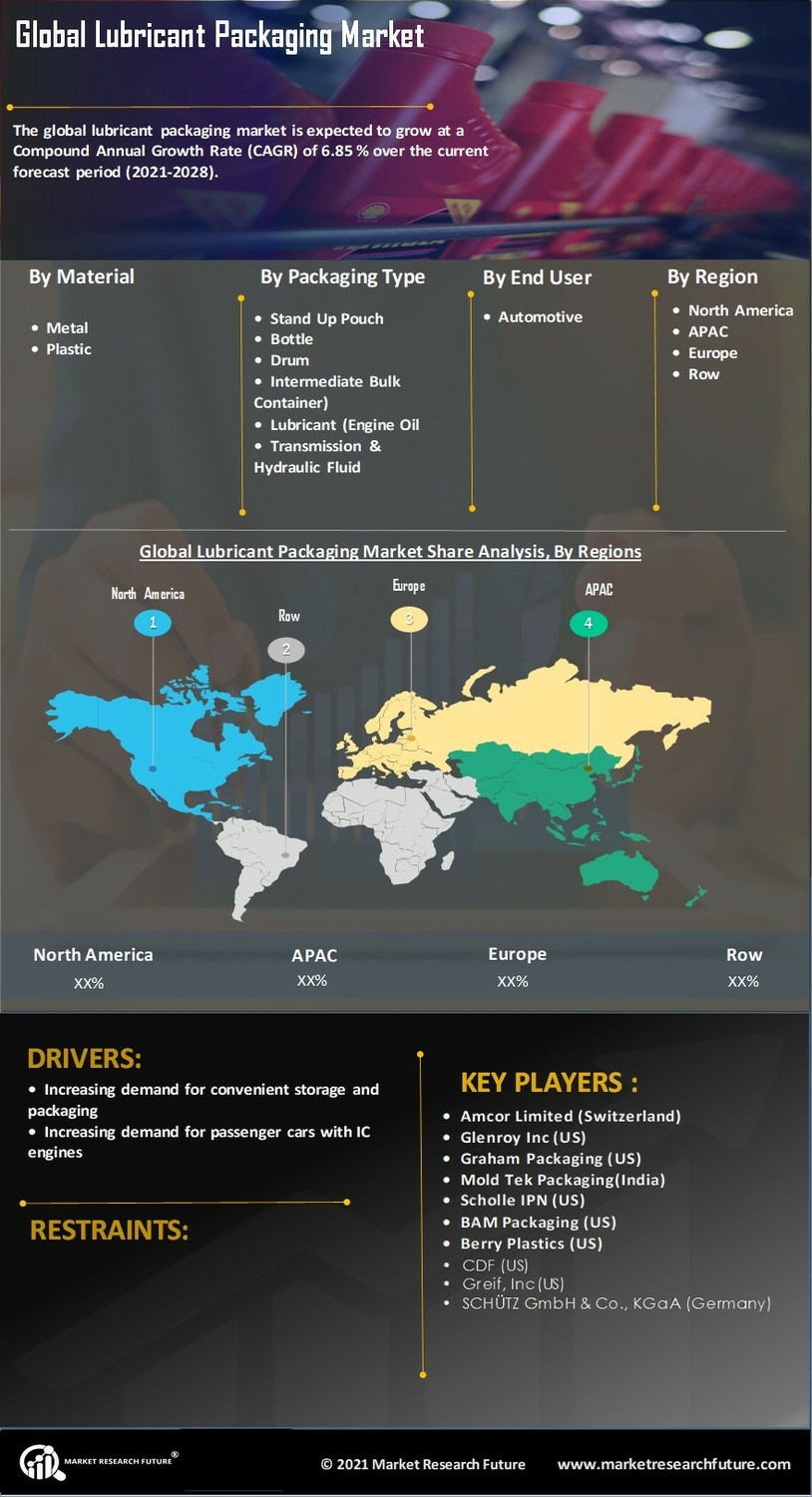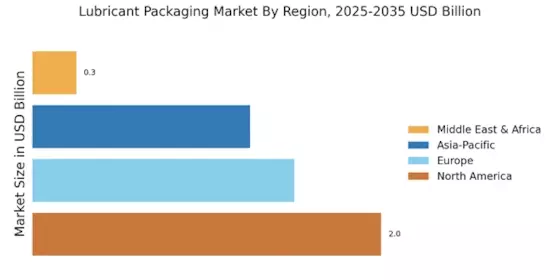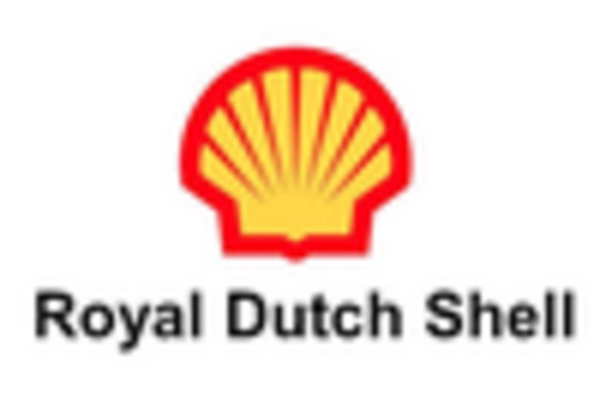Leading market players are investing heavily in research and development in order to expand their product lines, which will help the Lubricant Packaging Market, grow even more. Market participants are also undertaking a variety of strategic activities to expand their footprint, with important market developments including new product launches, contractual agreements, mergers and acquisitions, higher investments, and collaboration with other organizations. To expand and survive in a more competitive and rising market climate, Lubricant Packagingindustry must offer cost-effective items.
Manufacturing locally to minimize operational costs is one of the key business tactics used by manufacturers in the Lubricant Packaging industry to benefit clients and increase the market sector. In recent years, the Lubricant Packaging industry has offered some of the most significant advantages to lubricant market. Major players in the Lubricant Packaging Market, including Amcor Limited (Switzerland), Glenroy Inc (US), Graham Packaging (US), Mold Tek Packaging (India), Scholle IPN (US), BAM Packaging (US), Berry Plastics (US), CDF (US), Greif Inc(US), and others, are attempting to increase market demand by investing in research and development operations.
Scholle Packaging is the market leader in bag-in-box packaging for the food, beverage, and lubricant industries. With manufacturing facilities on five different continents and products sold in more than 60 nations. They provide a wide range in packaging solutions and expertise to meet the requirements of their customers, and they continually enhance their operations to better respond to and serve those customers. Their bag-in-box product selection consists of flexible films, filling equipment, bags, fittings, and closures. In 2020, As an international leader in adaptable packaging solutions, Scholle IPN has reached a significant production benchmark of sixty million bag-in-box containers.
With their packaging solutions, they have integrated advanced dispensing technological advances and high-speed filling apparatus.
Amcor plc is a worldwide packaging corporation. It designs and manufactures adaptable packaging, rigid vessels, specialty cartons, closures, and services for food, beverage, medicine, medical-device, household, and personal-care products, among others. Amcor is included in a number of international stock market indices, such as the Dow Jones Sustainability Index, the CDP Climate Transparency Leadership Index (Australia), the MSCI Sustainable development Index, the Ethibel Superiority Investment Register, and the FTSE4Good Index Series, which reflects its status. In 2019, Amcor acquired Bemis Company in a stock-for-stock transaction.
The merger of these two complementary businesses created a worldwide leader in customer packaging, with the footprint, scale, and capabilities to generate significant value for shareholders, provide customers and employees with the most appealing value proposition in the packaging industry, and deliver the most environmentally sustainable innovations.
Mobil™ launched a campaign in February 2023 that aims to foster sustainable packaging by using 50% Post-Consumer Recycled (PCR) plastic pails. The use of PCR pails promotes recycled plastics while reducing plastic waste, thereby advancing sustainability. ExxonMobil’s first-ever pails packing lubricating oils in India are half made from PCR, aiming to assist customers in cutting down on waste streams or converting them into value streams as they pursue their sustainability goals. In India, where my focus is usually, I first ask people to say what they think about waste and how it can be managed.
Indian lubricating oil pails are 50% post-consumer recycled plastic by design.



















Leave a Comment